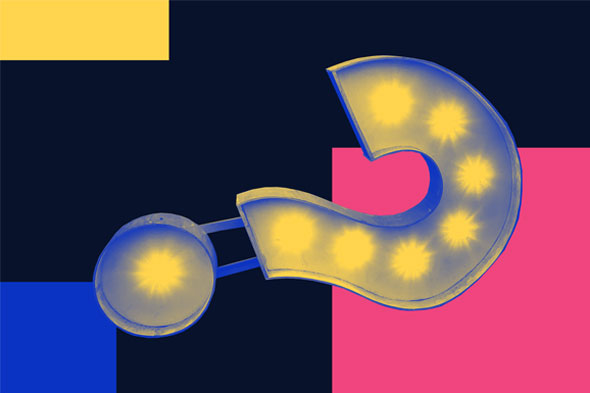

Ultimate Guide to Google Display Ad Sizes
Not sure what are the best Google display ad sizes? We’re here to help with all the latest specs.

.svg)
Make sure your ads are displayed correctly across the Internet by following the required size specifications. You’ll find everything you need to know about the top performing ad sizes here.
It’s a commonly quoted statistic that Google Display Network reaches 90% of online users. In other words, while social media advertising allows you to target a narrow audience with refined audience definition, advertising on Google allows you to potentially reach a much wider audience and drive more traffic to your website.
Here’s everything you need to know about Google display ad dimensions.
{{ADS_PORTFOLIO="/dev/components"}}
What is Google Ads and how does it work?
Before we get into the details, such as the best Google banner ad dimensions, let’s cover the basics first.
Google Ads (formerly AdWords) is an advertising platform developed by Google, which allows advertisers to bid for their ads to show up to web users.
Google Ads functions on a cost-per-click (CPC) basis, meaning that advertisers pay for every click on their ads. The CPC will vary depending on the keywords selected and how much other advertisers are willing to pay.
Other forms of paid advertising run through Google Ads are cost-per-impression (how many times people have seen your ad) and cost-per-engagement (e.g., how many times someone’s watched your video ad).
Here are some of the most important types of advertising campaigns you can create with Google Ads:
- Search campaigns — usually in text format, these ads may appear on Google search results pages when someone searches for a product or service similar to yours.
- Display Network campaigns — usually in image form, these ads appear on websites and take visitors to your landing page once clicked.
- Video campaigns — usually in the form of videos lasting 6 to 15 seconds, these ads are displayed just before or during YouTube content.
- App campaigns — a specific type of campaign that allows you to promote your app on Google Search, Google Play, YouTube, Gmail, and within other apps and mobile websites on the Display Network.
- Product Listing Ads — they feature a specific product and can include information like product description and rating, as well as an image of the product.
Google display ads (often also called banner ads) are primarily used for reaching new customers. The vast network means that, compared to search ads (text ads that pop up in search engine results when people search for a certain keyword or term), click-through rates are quite low.
However, you must bear in mind that these clicks often come from people who have no awareness of your brand and offer, so it’s a really powerful type of marketing and a valuable source of new leads.
So, if you hope people will actually click, you need to use the right Google display ad sizes and specs to ensure the ads look as intended.
Google display and video ad types and specs
You have a lot to focus on when it comes to ad creative and defining your target audience. So, here’s a quick rundown of the best Google display ad sizes.

Image ads
There are many different sizes and ad formats you can choose from, but all file sizes must be up to 150 KB. Bear in mind that this isn’t a lot at all and, if you want to use stock photos, these can easily go over the limit. In this case, you can try to resize your images using an online tool; however consulting a graphic designer is usually much better.
Accepted file types are PNG, JPG and GIF. Due to size limitations, JPG is the most commonly used file format.
Here are the most common Google display ad sizes.
Square and rectangle ad sizes
- 200 × 200 - Small square
- 240 × 400 - Vertical rectangle
- 250 × 250 - Square
- 250 × 360 - Triple widescreen
- 300 × 250 - Inline rectangle
- 336 × 280 - Large rectangle
- 580 × 400 - Netboard
Skyscraper ad sizes
- 120 × 600 - Skyscraper
- 160 × 600 - Wide skyscraper
- 300 × 600 - Half-page ad
- 300 × 1050 - Portrait
Leaderboard ad sizes
- 468 × 60 - Banner
- 728 × 90 - Leaderboard
- 930 × 180 - Top banner
- 970 × 90 - Large leaderboard
- 970 × 250 - Billboard
- 980 × 120 - Panorama
Mobile ad sizes
- 300 × 50 - Mobile banner
- 320 × 50 - Mobile banner
- 320 × 100 - Large mobile banner
In addition to that, you can also create animated ads. The accepted format for these is GIF and they can be up to 30 seconds long.
For shopping ad campaigns (product listing ads), these are the image requirements:
- Non-apparel images: at least 100 x 100 pixels
- Apparel images: at least 250 x 250 pixels
- Max. size for all images: 64 megapixels
- Max. file size: 16MB
Responsive ads
Responsive display ads automatically adjust their size and appearance according to the available space. So, a responsive ad might appear as a small chunk of text in one place and a medium rectangle in another.
When creating your display campaign, you should upload ads in 5-10 images in each aspect ratio (square and landscape). This means you don’t have to upload all the different banner ad sizes, but rather that Google will ensure your ads display correctly across desktop and mobile devices.
Here are the responsive ad specs:
Responsive display ad (images)
- Landscape aspect ratio 1.91:1, minimum size 600 x 314
- Square aspect ratio 1:1, minimum size 300 x 300
Responsive display ad (logo)
- 1:1, minimum 128 x 128
- 4:1, minimum 512 x 128
Video ads
Video advertising is booming right now, with almost 30% of online users watching 10 hours of video content weekly. Of course, this is the most complex file type to produce; however, even if you don’t have a video editor or designer on hand, there are several easy-to-use video ad tools out there, some of which are even free to use!
There are a few types of video ads you can use with Google Ads and they are:
- Skippable in-stream ads: popular with YouTube advertising, these ads play before, during or after the selected video.
- Non-skippable in-stream ads: same as above, but they only last up to 15 seconds and viewers don’t have the option to skip them.
- In-feed video ads: another form of advertising on YouTube; these videos appear next to related video content in the YouTube search results.
- Bumper ads: similar to non-skippable in-stream ads, these are shorter (up to 6 seconds) and apt for reaching a wide audience.
- Outstream ads: these appear as muted videos on websites (not YouTube).
When it comes to ad size specs, here is what you need to know about video ads. TrueView In-stream, Bumper video ad, Non-skippable video ad (banner) must be at least 300x6, while Outstream ads (logo)—anything between 1x1 and 1024x1024.
App campaigns
The image and video specifications used for this type of campaign are slightly different, so you should bear that in mind before opting for an App Promotion campaign. The maximum image size for landscape is 1024KB. For native ads, images should be in landscape or portrait mode, while interstitial ads should be done in portrait. Video ads must be hosted on YouTube.
The currently accepted image sizes for app campaigns are:
- 480x320 (landscape interstitial, variable size)
- 320x480 (portrait interstitial, variable size)
- 300x250 (fixed size)
- 320x50 (fixed size)
Conclusion
Bookmark this article for a quick and easy reminder of the best Google display ad sizes. If you follow these guidelines, you’ll know your ads will always look as intended, with the all important call-to-action always visible.
If you don’t want to bother with ad templates, and want custom ad designs instead, we can help.
ManyPixels is a one-stop shop for all your design needs, including Google display ads, social media, landing pages, motion graphics, and much, much more.
{{AD_BANNER="/dev/components"}}
Get started today with our simple monthly design subscription. Or book a 1:1 consultation to discuss your design needs with us.
Having lived and studied in London and Berlin, I'm back in native Serbia, working remotely and writing short stories and plays in my free time. With previous experience in the nonprofit sector, I'm currently writing about the universal language of good graphic design. I make mix CDs and my playlists are almost exclusively 1960s.
A design solution you will love
Fast & Reliable
Fixed Monthly Rate
Flexible & Scalable
Pro Designers






.jpg)

